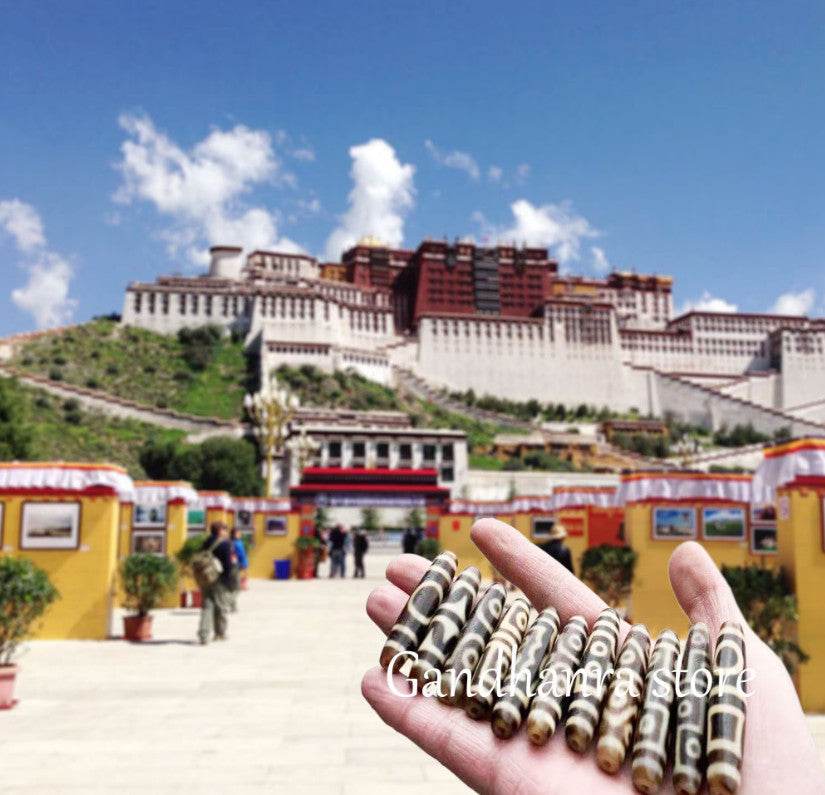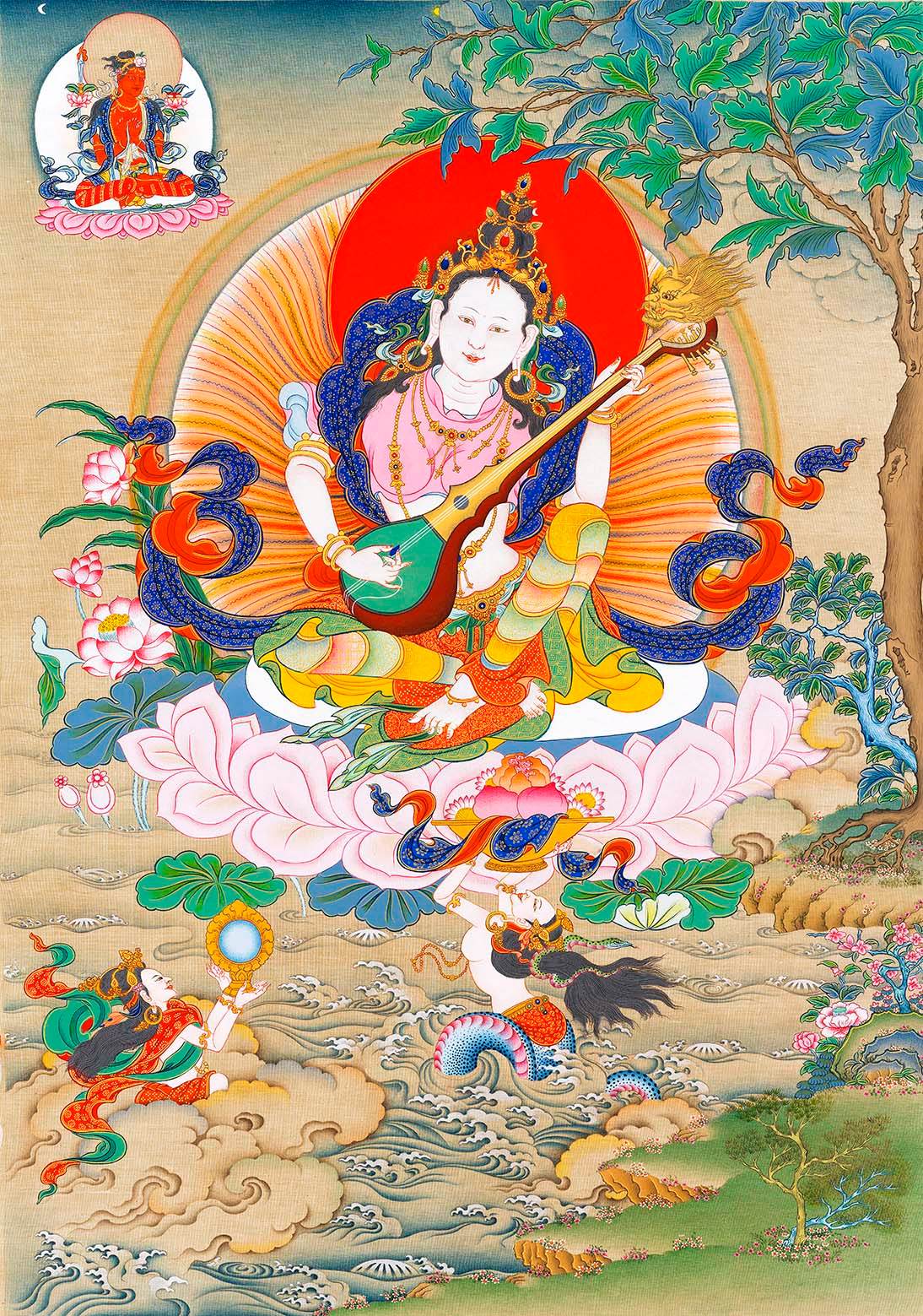
Ksitigarbha Bodhisattva: The Great Vow of Compassion and Salvation
Ksitigarbha Bodhisattva, the guardian of the underworld, embodies the boundless vow to liberate all beings from suffering.

Click here to shop Ksitigarbha thangka
Introduction to Kṣitigarbha Bodhisattva
Ksitigarbha (Sanskrit: Ksitigarbha; Chinese: Dizang) is one of the most revered bodhisattvas in Mahayana Buddhism. Known as the "Earth Treasury Bodhisattva," he represents compassion, endurance, and the unwavering commitment to save all beings—especially those in the hell realms. His name reflects his promise to care for beings as tirelessly as the earth holds treasures.
Unlike celestial bodhisattvas, Ksitigarbha is often depicted as a humble monk, symbolizing his approachable nature and his dedication to suffering beings in the lowest realms.
The Origins and History of Ksitigarbha
The story of Ksitigarbha originates from the Sutra of the Great Vows of Ksitigarbha Bodhisattva. According to the text, he made his great vow after witnessing his mother suffering in hell:
"I shall not achieve Buddhahood until all hells are emptied."
He is also believed to have manifested in ancient China as a Korean monk named Kim Gyo-gak, who traveled to Mount Jiuhua in Anhui province, where he meditated and attained enlightenment.
Ksitigarbha is often associated with six realms of existence, and he works tirelessly to relieve suffering in each—particularly in hell.

The Symbolism of Ksitigarbha
Monk’s Robe: Represents humility, simplicity, and renunciation.
Staff (Khakkhara): Used to open the gates of hell and awaken beings to enlightenment.
Wish-Fulfilling Jewel (Cintamani): Symbolizes the light of wisdom that dispels darkness and fulfills needs.
Serene Expression: Reflects compassion and calm amid suffering.
The Mantra of Ksitigarbha
The powerful mantra associated with Ksitigarbha is:
"Om Ha Ha Ha Vismaye Svaha" (ॐ हा हा हा विस्मये स्वाहा)
Meaning of the Mantra:
Om: Universal sacred sound.
Ha Ha Ha: Laughter of wisdom, conquering fear and ignorance.
Vismaye: "Wonder" or "marvel," representing liberation.
Svaha: "So be it."
Chanting this mantra invokes Ksitigarbha’s blessings for protection, karmic purification, and liberation from suffering.
How to Connect with Ksitigarbha
Meditation: Visualize him radiating golden light, freeing beings from darkness.
Mantra Recitation: Chant "Om Ha Ha Ha Vismaye Svaha" 21 or 108 times daily.
Acts of Compassion: Dedicate good deeds to loved ones or beings in suffering.
Offerings: Light incense, offer clean water, or recite his sutra in his honor.
Conclusion
Ksitigarbha Bodhisattva is a profound source of hope for those facing grief, fear, or karmic obstacles. His infinite compassion and unwavering vow remind us that enlightenment is not distant—it is found in our determination to ease the suffering of others.
Whether you seek to purify karma, overcome grief, or aid departed loved ones, calling upon Ksitigarbha can bring profound peace and transformation.
May the great vow of Ksitigarbha illuminate your path!
Have you ever recited the Ksitigarbha Mantra or engaged in practices to aid departed beings?
Share your experiences in the comments below!







3 comentários
dz7o6k
qep3r5
qep3r5